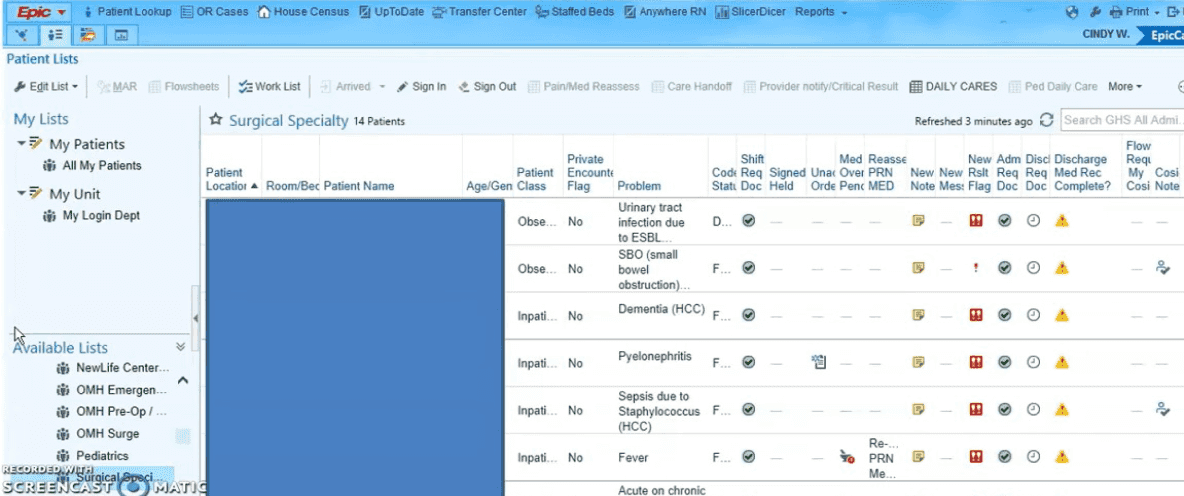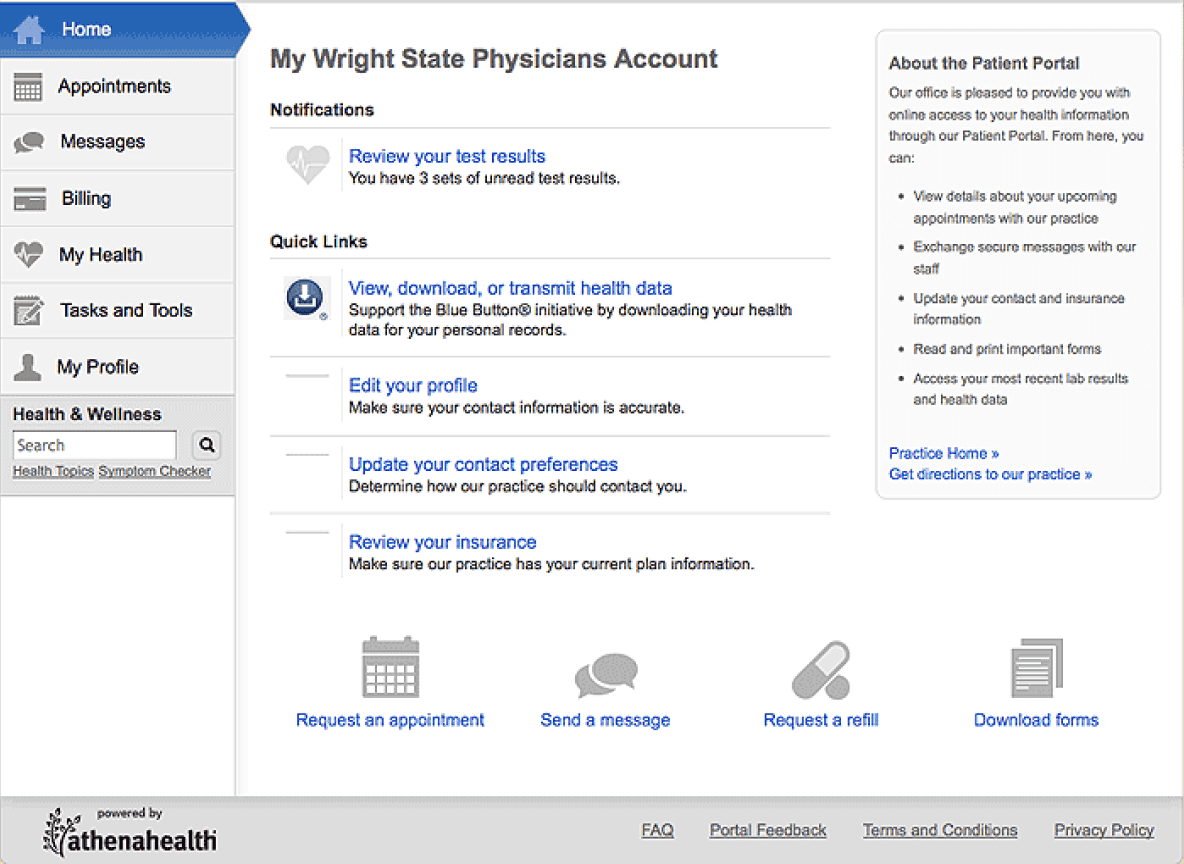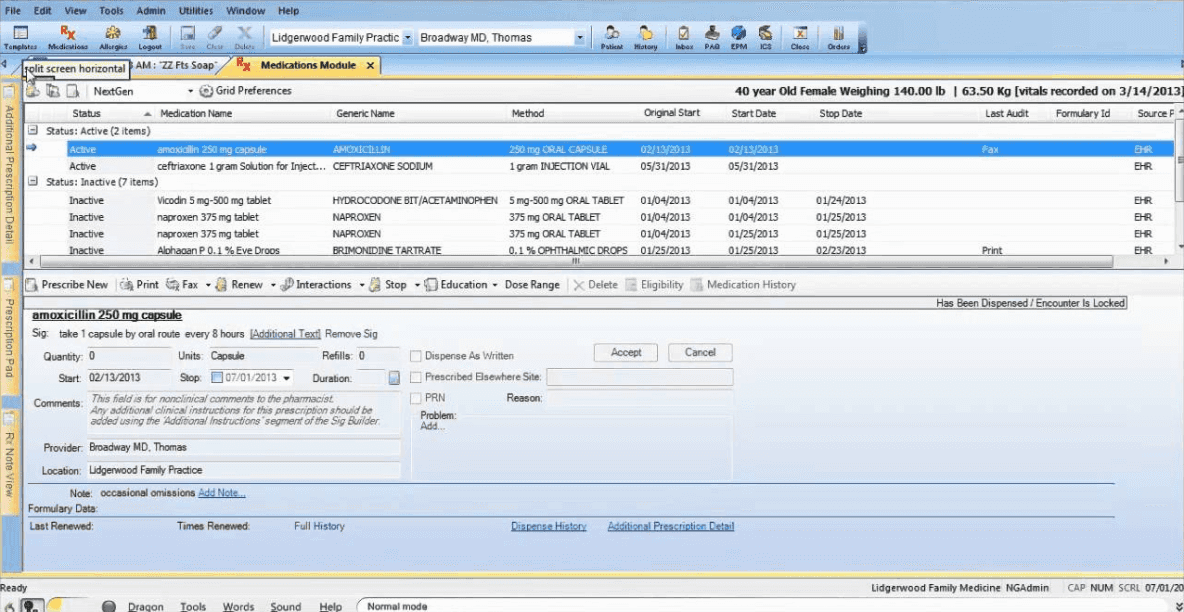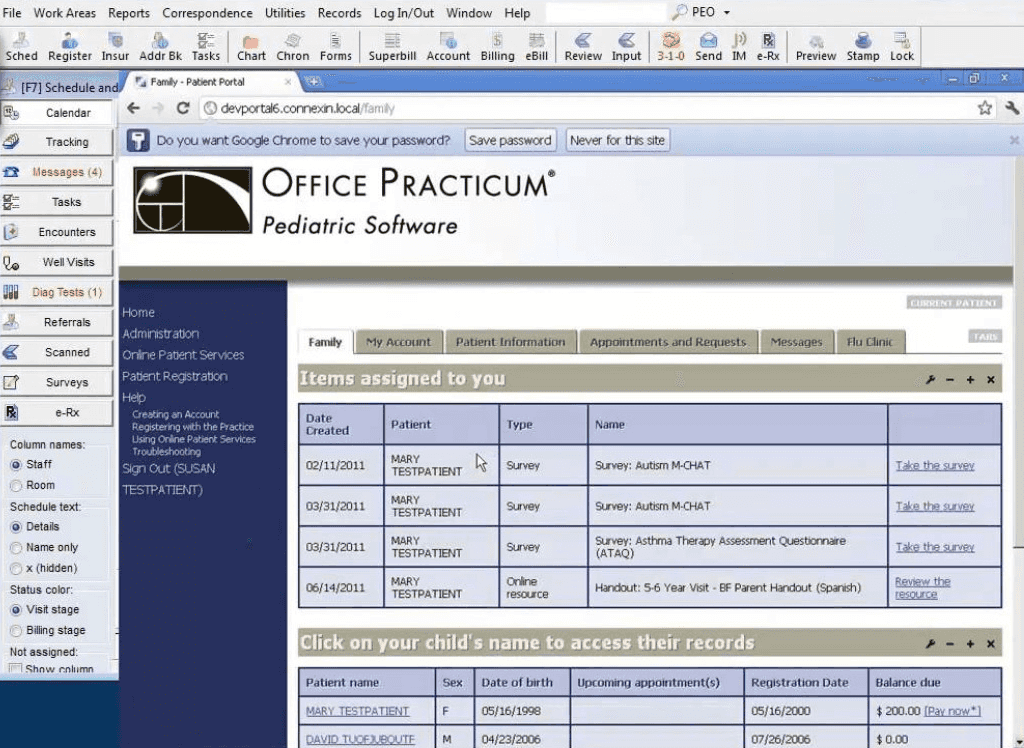
Pediatric EHR: key features, benefits, and leading platforms
July 20, 2023
According to the Journal of Pediatrics, more than 80% of pediatricians use EHRs lacking optimal functionality, which results in errors in clinical decisions, misdiagnosis, and miscalculations in medication dosages. Our EHR implementation experts help enhance the quality of children’s medical care with a properly chosen, implemented, and tuned pediatric EHR software.
What is pediatric EHR?
pediatricians spend documenting care
PubMed
of pediatricians have adopted some kind of EHR
Journal of Pediatrics
estimated pediatric EHR market worth by 2030
Data Bridge Market Research
Pediatric EHR features
Pediatric EHRs have many features similar to general-use EHRs. These modules, however, cannot fully cover the everyday needs of a pediatric practice. This is why AHRQ and the Centers for Medicare and Medicaid Services (CMS) have developed the Children’s Electronic Health Record Format, which describes the critical functionality, data elements, and other field-specific requirements for pediatric EHRs. Moreover, pediatric EHRs’ functionality can be enhanced with the help of third-party integrations.
Patient profile
Documentation management
Insurance management
Appointment management
E-prescribing
Clinical (pediatric) workflows
Medical templates
Reporting and analytics
Secure data exchange
General features
Specific features
Family data
Growth and development charting
Prenatal and newborn screening data
Special care needs management
Preventive care management
A child abuse reporting system
Easy generation of back-to-school, sports, and physical forms
AAP-compliant confidentiality and security
Looking for an EHR suitable for your pediatric practice?
Pediatric EHR integrations
The healthcare industry is becoming increasingly digitized, so the number of software tools medical professionals use daily is growing. In order to protect patient data while maintaining efficient operations and accurate patient records, healthcare software must be interoperable. EHR often becomes the heart of a hospital ecosystem and integrates with other software based on the organization’s needs.
Revenue cycle management software
Connecting EHR to telemedicine apps allows pediatricians providing remote pediatric care to have the child’s health information on hand during the session and share the meeting and treatment information with other professionals: family doctors, nurses, caregivers, and school or camp healthcare personnel.
Top pediatric EHR solutions
Most seasoned vendors offer on-premise or cloud-based EHR systems geared toward pediatric organizations. However, many of them are just general-use EHRs with a couple of add-ons. Therefore, we recommend choosing a solution that was developed as a pediatric one at its core.
Microsoft’s cloud-based platform, MS Cloud for Healthcare, offers capabilities essential to pediatric organizations, such as patient profiling, document and care management, video and audio conferencing, medical team collaboration, and patient portal setup. This highly secure and reliable solution can be customized to meet the specific needs of each organization and integrated with other healthcare systems and devices. Compatible with all major OSs and available on mobile devices, MS Cloud for Healthcare is suitable for organizations of any size, especially those already using Microsoft software for administrative tasks.
Arguably the largest EHR vendor, Epic offers a cloud-based solution with all the essential functionality of a standard system and various add-on modules relevant to pediatricians. The company has recently cooperated with PediNotes to enhance its functionality with pediatric practice management, neonatal/infant-focused features, data analytic capabilities, and pediatrics-specific information. This software is most suitable for large and medium practices, while smaller pediatric care providers might turn to cheaper systems with less advanced functionality.
Image title: Epic EHR
Data source: emrfinder.com — Epic EMR Software, 2022

Athenahealth EHR for pediatric settings is available for both on-premise and cloud deployment. It is connected to the patient portal with flexible authorization, supports pediatric workflows and field-specific administrative tasks, can be flawlessly integrated with numerous third-party apps, and has a built-in medical billing feature. Moreover, essential data can be accessed from any device running on popular OSs: Windows, Linux, Android, and iOS. In 2020, athenahealth software was rated first among non-specific EHRs in a pediatric setting on KLAS’ Pediatric Ambulatory EMR Report.
Image title: Athenahealth EHR
Data source: emrfinder.com — athenahealth EHR Software, 2022

NextGen positions its pediatric solution as a stand-alone product developed in close collaboration with pediatricians. In addition to core EHR modules, it has all the functions listed as essential in the Children’s Electronic Health Record Format, including weight-based drug dosing, automatic growth charts, vaccination management, and history of present illness (HPI) templates. Additionally, the system is easily integrated with other NextGen and third-party apps.
Image title: NetGen EHR
Data source: emrfinder.com — NextGen EHR Software, 2022

Office Practicum’s engineers are experts in pediatric software and offer both on-premise and cloud-based solutions for small and medium-sized practices. Their EHR solution is compatible with popular OSs and has a mobile app version. In addition to multiple essential and specialized functions, OP’s EHR system has a unique VacLogic module that follows ACIP guidelines and supports the entire immunization process, including vaccine order management, can generate electronic camp and school forms in one click, and includes continuously updated pediatric materials (research, studies, measurement standards, and charts).
Image title: Office Practicum
Data source: emrfinder.com — Office Practicum EMR/EHR Software, 2022

Custom EHRs
However, even the best out-of-the-box solutions don’t always meet all pediatricians’ needs. On the one hand, the providers of pediatric surgery, neurology, mental health, and other specialized medical services have considerably different workflows and therefore EHR requirements. On the other hand, general practitioners, especially solo ones, might be overwhelmed by the rich functionality platform EHRs provide. In contrast, a fully custom solution, developed solely for your needs and requirements, will include all the necessary practice-specific modules, have properly established workflows, and be integrated with the relevant third-party systems.
Hire Itransition experts for custom EHR development and integration services
How to choose pediatric EHR software
When choosing EHR, pediatric providers face multiple options, which can be very confusing, especially for professionals who have never used EHR before. We recommend using the guide below as a starting point to learn what exactly you are looking for in your pediatric EHR software.
Clinical and administrative requirements
Security and backup options
Scalability and mobility
Implementation cost
Ease of use
Pediatric EHR implementation roadmap
Our experts will implement a pediatric EMR or EHR system for an organization of any size. We offer consultation, development, data migration, system modernization, and support services.
1
Pre-implementation
Our team helps pediatricians define requirements for their future system and choose the relevant tech stack.
2
Implementation
We draw out the project’s milestones, determine a realistic timeline, and develop a solution compliant with industry standards.
We integrate the pediatric EHR solution with other relevant healthcare software or develop complementary mHealth apps.
Throughout the entire implementation process, our experts conduct quality assurance and test runs.
We implement the pediatric EHR into the organization’s IT ecosystem and migrate relevant data.
3
Post-implementation
Our support team monitors software performance, delivers improvements and updates, and solves any issues that come up during the system’s usage. We also provide user training whenever needed.
Pediatric EHR benefits
While most pediatricians still implement general-practice EHR systems, specialized software can boost their performance and help cut the time doctors spend on administrative tasks, according to the 2021 research conducted by Stanford University’s School of Medicine. Moreover, the Agency for Healthcare Research and Quality cites another study that suggests EHRs lacking pediatrics-specific functionality could threaten patient safety. So how can pediatric EHRs help healthcare professionals with the challenges they face in children’s healthcare?
Increased revenue
Improved patient outcomes
Simplified data exchange between institutions
Quick and safe child abuse reporting
Safer and more efficient medication management
Pediatric EHR security
Children’s health data is highly sensitive, and a pediatric practice can face significant penalties in case it gets compromised. Luckily, several techniques can safeguard data stored in a pediatric EHR.
Compliance with ONC – Authorized testing and Certification Body
Two-factor authentication
Personnel security training
Security system upgrades
Regular security audits
API-shielding for integrated apps
Compliance with HIPAA, HITECH, and CDC recommendations
Data encryption
EHR security
Common issues with pediatric EHRs
The challenges shouldn’t discourage pediatricians from adopting the system, as the advantages prevail. Besides, the healthcare IT industry advances very fast, and both vendors and care providers take an active part in improving pediatric EHR usability, interoperability, and security.
EHR software can sometimes contribute to pediatricians’ stress and burnout. Despite spending less time during and after clinical hours getting digital documentation in order, pediatricians still report information overload, and click and alert fatigue after using EHRs.
Documentation burden
EHR software can sometimes contribute to pediatricians’ stress and burnout. Despite spending less time during and after clinical hours getting digital documentation in order, pediatricians still report information overload, and click and alert fatigue after using EHRs.
Documentation burden
Pediatric practice management should carefully choose and implement software solutions that contain only the vital functionality to avoid overburdening users with unnecessary tabs or fields to fill in. The interface should be user-friendly, simple, and intuitive to reduce the mental pressure on clinicians – the primary users of the software. Sufficient training also contributes to personnel satisfaction and prevents burnout as users learn how to use their EHR efficiently.
The American Academy of Pediatrics issued some documentation that includes requirements for pediatric EHRs but hasn’t provided a comprehensive technical report or policy statement that covers all areas of EHR software application.
Lack of unified AAP regulations
The American Academy of Pediatrics issued some documentation that includes requirements for pediatric EHRs but hasn’t provided a comprehensive technical report or policy statement that covers all areas of EHR software application.
Lack of unified AAP regulations
Software providers, ONC, CMS, and healthcare organizations should work together to create unified regulations so that certified EHRs for pediatricians adhere to uniform rules and standards. Comprehensive documentation would benefit pediatric EHRs’ security and the efficiency of all child healthcare organizations.
Though there's been significant progress in healthcare interoperability in recent years, pediatricians who use legacy software struggle to connect it to their EHR.
Poor interoperability
Though there's been significant progress in healthcare interoperability in recent years, pediatricians who use legacy software struggle to connect it to their EHR.
Poor interoperability
Providers should consider updating their pediatrics EMR and EHR software in favor of solutions that ensure interoperability or invest in integration services to create a seamless data flow between different software solutions in a particular healthcare ecosystem.

Elevate the level of care with pediatric EHR
Each medical specialty faces unique challenges and tasks, and general-use electronic health record solutions can’t always meet them. There are many EHRs to choose from that can enhance healthcare delivery and reduce the administrative workload for pediatric clinicians. Before implementing a pediatric EHR solution, determine the functionality and data security features your hospital needs. Afterward, follow the best implementation practices to reap the most benefits from your system. Implementing EHR in pediatrics is a challenging task and requires experts' insights. Itransition is ready to help, offering professional EHR consulting and development services.

Enhance your pediatric practice with an effective EHR solution
FAQ
What is the difference between a general-use and a pediatric EHR?
The major differences include enhanced interoperability with record-keeping systems for educational and recreational organizations, role-based access for a child's family members, and a wide set of field-specific functions (immunization schedules, newborn screenings, growth charts, etc.). The functional composition and data format for this type of EHR is regulated by the Children’s Electronic Health Record Format.
Do all pediatricians using EHRs qualify for Meaningful Use?
Meaningful Use eligibility depends on the practitioners’ workflows supported by the EHR. Besides reporting through their respective states, pediatricians should have at least 20% of Medicaid appointments. There are other nuances of reaching different stages of Meaningful Use for pediatric practices, so it's best to consult an expert while choosing a system.
How much does the pediatric EMR or EHR cost?
Software pricing depends on multiple factors, including deployment mode, organization size, features, and integration complexity. Discuss the EHR costs with different vendors after you have determined your organization’s requirements for such a solution.

Case study
Telemedicine-ready EHR
Development and testing of a Telemedicine-enabled EHR, integrated with innovative voice recognition, smartpen and clinical text analysis features.

Insights
EHR integration: a complete overview & real-world examples
Explore EHR integration payoffs, roadmap, and real-life examples, as well as healthcare software to integrate with EHRs to improve care quality.

Case study
Health insurance management platform
Maximus Inc. leverages Itransition’s expertise to handle their insurance management platform development.

Service
Healthcare software development solutions & services
Entrust your medical software development to a company with 25+ years of experience in healthcare IT. Compliance and security guaranteed.
More about healthcare software services
Services
EHR
Telehealth